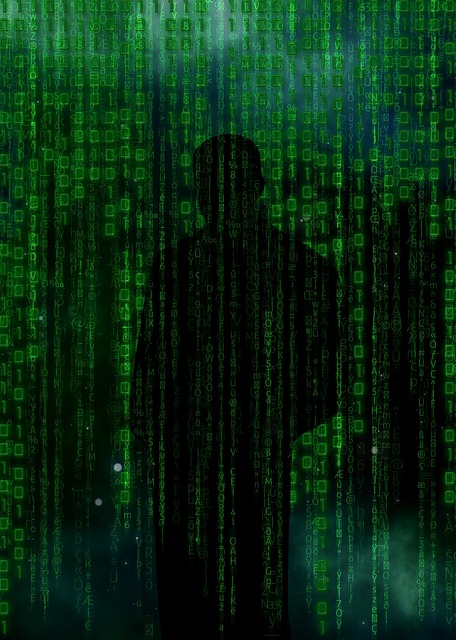Widgetized Section
Go to Admin » Appearance » Widgets » and move Gabfire Widget: Social into that MastheadOverlay zone
Combating Cyber Terrorism: The New War on Terror
The views expressed are those of the author and do not necessarily reflect the views of ASPA as an organization.
By Monique Maldonado
January 29, 2016
Computer security has been a prominent issue within the United States over the past decade. With international and domestic adversaries attempting to destroy our virtual blueprint, it is inevitable that cyber attacks will worsen if the government does not devise an innovative, solid plan.
As defined by the Government Accountability Office, cyber security is,
“Pervasive and sustained cyber attacks against the United States that could have a potentially devastating impact on federal and nonfederal systems, disrupting the operations of governments and businesses and the lives of private individuals.”
Cyber terrorism poses a similar distinction. As expressed by Gabriel Weimann of the United States Institute of Peace’s Special Report, cyber terrorism is defined as,
“Unlawful attacks and threats of attacks against computers, networks, and the information stored therein when done to intimidate or coerce a government of its people in furtherance of political or social objectives.”
Essentially, cyber terrorism is blatantly attempting to destroy computer systems and networks on which society depends for everyday use. For the last 20 years, society has depended on technology in terms of banking, working, shopping and even going to school, which has caused an excessive crutch on the virtual world rather than traditional measures.
As cyber terrorism is an attack against the United States’ electronic infrastructure and networks, emergency management agencies have been “tapped” with formulating plans to protect all citizens’ technology as well as governments and businesses. Former Secretary for the Department Homeland Security (DHS), Janet Napolitano voiced the importance of governments and businesses working together for emergency preparedness strategies of cyber terrorism at the ASIS International Conference in 2012. Elaine Pittman, managing editor of the Emergency Management website, cited from Napolitano,
“The private sector is in a good position to recognize signs of a potential cyber attack, and information sharing remains one of the most important tools for detecting threats and being able to act on them.”
How is the Government Combating Cyber Terrorism?

It should not be a surprise that communication is the key to successful execution on the gateway analysis of cyber terrorism. It is important that agencies work together and communicate to find critical vulnerabilities that could potentially harm networks and computer systems at a catastrophic level. In three short years, organizations have gone to great lengths to strengthen communications and bridge gaps between government and industry in mitigating cyber terrorism. For example, federal agencies such as the Department of Homeland Security (DHS) and the FBI have teamed up with local law enforcement to impose emergency management procedures following cyber attacks and other crimes that have involved terrorism. They also work together to establish initiatives in combating cyber terrorism.
Congress is heavily involved and showed utter seriousness by implementing the Cybersecurity Information Sharing Act of 2015, the National Cybersecurity Protection Advancement Act and the Protecting Cyber Networks Act. These are just a few bills that were sanctioned in support of President Obama’s stance on cybersecurity. Furthermore, Congress launched an incentive for private-sector companies to increase participation in the war on cyber terrorism.
Current Secretary of DHS Jeh Johnson emphasized the strides Congress has taken by passing these bills. Johnson expressed in his remarks at last year’s CyberCon Convention in Arlington, Va., that cybersecurity is one of the two top priorities his agency faces. He stated,
“I recognize that cybersecurity must exist alongside counterterrorism as one of our top priorities, for the protection of the American people, American businesses large and small, and the federal government.”
He has also built a major platform for cyber terrorism and counterterrorism, which is something he will continue to do until the end of President Obama’s tenure. Creating a balance between the two and emphasizing the need for information sharing and direct communication among agencies is the best approach to protecting America’s resources.
Awareness
As the government bolsters ties between local, state and federal agencies with private sectors, there will continue to be a powerful alliance on the war against cyber terrorism. Maintaining training and bringing awareness to cyber terrorism is the key to overcoming the battle of adversary. Continuing to educate information technology professionals with the most advanced, specialized training, as well as keeping the public informed on the latest cyber attacks, will increase the chances of strengthening the nation’s virtual blueprint. Finally, maintaining partnerships between government and businesses to work together and keep emergency initiatives current will ensure adversaries lose the war.
Author: Dr. Monique M. Maldonado is a veteran of the U.S. Air Force, an educational consultant, researcher and writer. She is an associate professor for the School of Security and Global Studies in Homeland Security at American Public University System. She is also a lead adjunct professor for the School of Graduate and Degree Completion programs at Tiffin University. Dr. Maldonado can be reached at [email protected].


Follow Us!